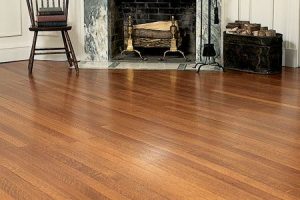
The Comprehensive Guide to Installing Cabinet Crown Molding
Just like a false ceiling design, cabinet crown molding is a decorative trim that can add a touch of elegance to your kitchen interior design. It’s a great way to enhance the look of your kitchen, bathroom, or any room with cabinets, making them appear more polished and finished. But how do you install it? While it might seem intimidating at first, with the right tools, materials, and steps, you can successfully install cabinet crown molding yourself.
This guide will walk you through the process, step by step, helping you transform your kitchen interior design with a sophisticated touch. Whether you’re an experienced DIYer or a novice when it comes to home improvements, these instructions will make the installation process clear and manageable. Let’s get started!
Step 1: Gather Your Tools and Materials
Before you begin, ensure you have all the necessary tools and materials. You’ll need a measuring tape, a hammer or nail gun, wood filler, paint or stain, and of course, your crown molding. Having everything ready will make the process smoother and faster. It’s also important to wear safety glasses and gloves to protect yourself during the project.
Step 2: Measure Your Cabinets
Accurate measurements are key to successful installation. Use your measuring tape to measure the length and width of your cabinets where the molding will be installed. Remember to take note of both the front and side lengths of each cabinet. These measurements will guide you when cutting your molding.

Step 3: Cut the Molding
Using your miter saw, cut the crown molding according to the measurements you took. Make sure to cut at the correct angle for the corners of your cabinets – this is typically a 45-degree angle. The coping saw can be used to cut the inside corners for a more precise fit. Always double-check your measurements before making each cut to avoid mistakes.
Step 4: Dry Fit the Molding
Before attaching the molding to your kitchen interior design, it’s recommended to do a ‘dry fit’. This involves placing the cut pieces of molding on the cabinets without securing them to see how they fit. Make any necessary adjustments to ensure a perfect fit. This step can save you from potential rework later on.
Step 5: Attach the Molding to the Cabinets
Once you’re satisfied with the fit, it’s time to attach the molding. Using your hammer or nail gun, secure the molding to the cabinets with nails. Ensure the molding is straight and flush with the cabinet before you start nailing. Remember to nail into the cabinet frame and not the doors or drawers.
Step 6: Fill Nail Holes and Sand
After the molding is attached, fill any visible nail holes with wood filler. Once the filler is dry, sand the area until it’s smooth and flush with the rest of the molding. This step will ensure a seamless look when you apply paint or stain. Always wipe away the dust after sanding to prepare for the next step.
Step 7: Paint or Stain
Now it’s time to paint or stain your crown molding to match your cabinets. Apply your chosen finish in thin, even coats, allowing each coat to dry thoroughly before applying the next. Be sure to cover all visible areas for a uniform look. This step can drastically transform the look of your cabinets, making them appear more upscale.
Step 8: Clean Up
Finally, clean up your workspace or kitchen cabinet design. Dispose of any leftover materials and sweep up sawdust. Wipe down your newly installed crown molding and surrounding area to remove any dust or debris. With this final step, you will have successfully installed your cabinet crown molding, adding a stylish touch to your room.
You’ve successfully navigated the process of installing cabinet crown molding. Cabinet crown molding might have seemed daunting at first, but with careful preparation, accurate measurements, and attention to detail, you can enhance your kitchen cabinet design with a touch of elegance. This upgrade not only adds aesthetic appeal but can also increase the value of your home. Remember, the key to any successful home improvement project like false ceiling design and cabinet crown molding is patience and precision.






